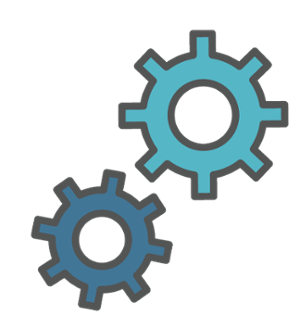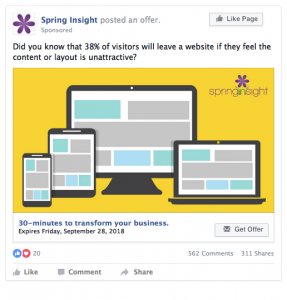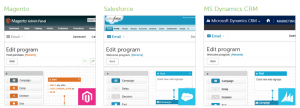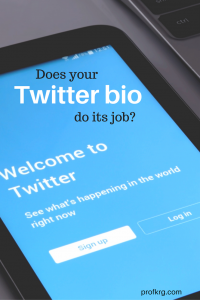— July 10, 2018
With marketers adopting more personalized strategies, like nurturing via email workflows or developing a partner program, B2B buyers are looking beyond traditional methods of engagement and are pursuing building relationships with organizations.
The trend is undeniable. Instead of purchasing large booths (which come with large price tags), B2B marketers are putting more resources than before into digital marketing initiatives. According to Demand Gen, 8 out of 10 of the most effective demand generation channels for B2B marketers are digital, with the top 3 stated as email, search, and website.
Now more than ever, it’s important to be where your audience is and for the majority of B2B organizations – that’s online. In fact, 9 out of 10 B2B buyers say online content has a moderate to major effect on purchasing decisions.
And that’s not all.
With 67% of the buyer’s journey now done digitally – think content, social, influencer, and partner marketing – understanding the value of online marketing is a must. More so, only 2% of cold calls result in an appointment. So instead of focusing on outbound efforts, marketers are looking at how to build relationships, while leveraging inbound marketing tools.1
What does this mean for organizations looking at the future of customer relationships?
Forrester predicts that B2B marketers will:
– Put the customer at the core of their purpose
– Redefine its charter to better engage the new business consumer
– Optimize engagement with artificial intelligence (AI)
– Prioritize operational excellence
In the B2B marketing world, partner marketing plays a crucial role in acquiring new business. Engaging and building positive brand relationships with prospects via channel partners, value-added resellers, and agencies produces immediate results similar to customer referrals.
And since 91% of customers say they’d give referrals, but only 11% of salespeople ask for them, partner marketing can position your business for the same effects, but without the giant chasm that exists between providing referrals and asking for them.
Getting Started with a Partner Program
Leveraging technology is critical when it comes to developing your partner program. It’s crucial to adopt best practices and update outdated business processes by leveraging automated partner programs. Here’s how to get started:

Step 1: Focus on the Audience
Prioritize increasing the quality rather than the quantity of your partners in your program.
Utilize the Portal Registration Page: The portal registration page allows you to collect additional information from your partners such as their company website and other useful details. Once they enroll via the registration form, partners will automatically be logged into the portal for easy sharing.
Auto-Enroll Partners: For relationships you’ve established with existing partners, auto-enroll them into your program to make participation turnkey.
Kickoff the Program: Don’t just hope that partners will find your program. Announce your program launch through dedicated emails to start seeing results quickly.
Build a Program Overview Landing Page: Provide partners with a comprehensive overview of the program by having a dedicated page to point them to.
Step 2: It’s All About Engagement
Keep your program top-of-mind with partners, influencers, resellers, and more by proactively engaging with them often, and will valuable assets.
Implement a Direct Entry Form: Partners tend to have a more personal relationship with your brand and are likely to have contacts they want to recommend for individualized follow-up. A Direct Entry Form allows partners to enter contact information of a referee into a form that lives in your portal.
Encourage Employee Promotion: Provide employees that have high touch points with your partners with copy or a graphic that they can use in their email signature to promote the program.
Create an Educational Guide or Video: Send a toolkit with all of the details to new partners in a welcome email and include a link on your program overview landing page. Include information on what and where to share, how to utilize the portal, recommendations for seeing success and more.
Send Dedicated Emails: Encourage engagement by providing useful program information in dedicated emails. These emails can offer suggestions for seeing success or even highlight top performers.
Build a Community: Create a place where your partners can share with one another. A private Facebook group is a great place for partners to share with each other and your brand.
Step 3: The Incentive Matters
Ensure you’re offering the right incentive at the right time by understanding what matters to your partners.
Utilize a Revenue Share: Most partner programs offer a commission that is a percentage of the total purchase. Monetary commissions, such as PayPal, are most successful.
Offer a Dual Incentive: Rewarding both the partner and the referee can provide a substantial lift.
Implement Limited-Time Rewards: Boost participation by offering partners exclusive rewards in addition to their base commission. For example, you could award conference tickets based on top performance during a specific month.
Leveraging Partner Marketing to Develop Customer Relationships
Across industries, establishing a trust-based relationship from first interaction is extremely important. Online or in-person, today’s buyer is more likely to turn to partners, peer-to-peer referrals, brand connoisseurs, and industry leaders when considering various product offerings.
In fact, B2B buyers are typically 57% of the way to a buying decision before actively engaging with sales. This underscores the importance for marketing to pave the path at every step of the journey for consumers to learn about and engage with your brand.
[1] B2B Marketing & Sales Statistics
Business & Finance Articles on Business 2 Community
(81)










